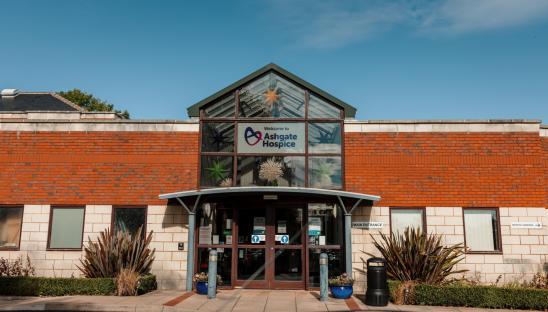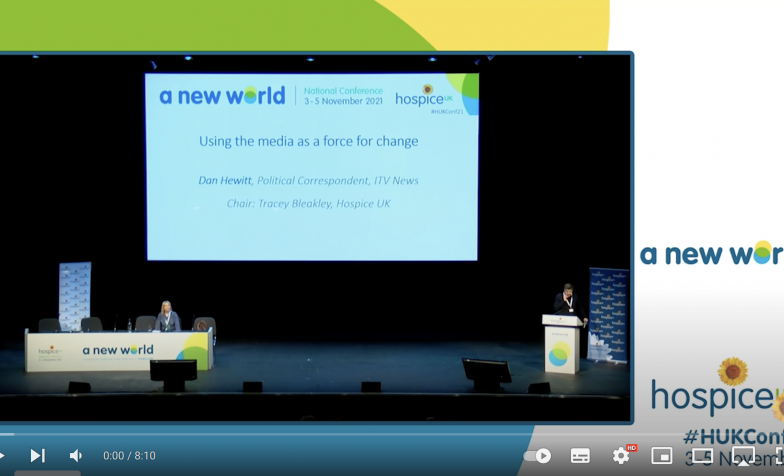
Influencing through local media and social media

On this page, we’re sharing an example of how one hospice leveraged the media to help influence commissioners, and highlighting some key lessons for public campaigning.
Introduction to local media
As much-loved local institutions, hospices have strong relationships with their local media, and a strong presence in local social media communities. These are often used – with great success – as vehicles to share personal powerful stories about brilliant hospice care and support fundraising efforts.
When thinking about how to influence local decision-makers, these communication tools can also be valuable. By rallying local journalists and the local community behind your cause, you can increase the visibility of what you’re trying to achieve and make clear that it is something that the community cares about.
Talking publicly about your influencing objectives isn’t always appropriate – many discussions with commissioners or partners are better had in private or at official meetings. But sometimes, to help get traction on an issue, or ‘unblock’ a sticky challenge that is proving difficult to progress on, bringing some media and public pressure to bear can be effective.

Ashgate Hospice
When Ashgate Hospice was faced with a £2 million budget deficit during the pandemic, central government funding secured by Hospice UK was not sufficient to plug the gap. There was an urgent need to convince the local health system to make a bigger contribution toward the hospice and its services.
Going public
As well as ‘behind-closed-doors’ negotiations, Ashgate’s team decided to publicly mobilise community support. They set out the problem clearly to their local community across all their main communications channels.
Simplicity of message was key – as Chief Executive Barbara-Anne Walker explained, "we wouldn’t fund maternity care in this way."
They weren’t afraid to be direct about the problem – they were facing job cuts and cuts to services without additional support.
Telling human stories
Equally critical to the approach was the use of powerful storytelling, which so many hospices are so good at. By working with patients and families to share experiences of their care, Ashgate was able to make clear to decision-makers the importance and gravity of the situation.
Hospice fundraising teams adopt this approach routinely in appeals and fundraising campaigns; the same principle applies in lobbying and influencing efforts.
Working with the media
Based on this, targeted media outreach was successful, including local and also national media coverage, including Radio 4 and Radio 5Live, some of it delivered in partnership with Hospice UK.
As Ashgate demonstrated, a threat to a local service such as a hospice is without doubt the sort of story that the media will be interested in covering.
Rallying other voices
Ashgate also rallied the community and influential voices in support of the campaign. As well as encouraging supporters to write to their local MP, Ashgate encouraged local GPs and other clinicians to speak up on their behalf to local decision-makers.
A campaign win
The campaign was ultimately a success – with Ashgate securing an increased funding settlement from the Clinical Commissioning Group (CCG), and the feared job cuts avoided.
Anyone wishing to find out more about Ashgate’s work can contact Head of Communications Catherine Maddy.
Key lessons for public campaigning
In some cases, public and media pressure can help push your influencing efforts over the line. There are some principles and considerations to bear in mind when deciding on whether this is the right approach.
If you can’t answer these questions or are unsure, it may be that public influencing isn’t appropriate, or won’t work:
Can you clearly explain the ‘why’?
Palliative and end of life care is complex, nuanced, and requires significant technical expertise and knowledge. When considering whether to mobilise the public and the local media, you need to think through whether the problem you are trying to solve is easily explainable. Can it be summarised in a simple sentence or two?
The media, and by extension the public, don’t tend to have a significant appetite for or sufficient knowledge to understand the nuances and technicalities of commissioning processes and funding structures.
When engaging journalists, be prepared to be asked to simplify your message. What’s the problem? And what’s the tangible impact if you don’t solve the problem? Adopting the same approach in website materials and social media copy will pay dividends.
What evidence do you have?
You’ll need clear evidence of what’s on the line. Numbers, data and financial figures are the sorts of things journalists will ask for, and the sorts of material that will work well on your digital channels. What’s the cost? How many jobs? How much will services be affected? The more specific and tangible you can be, the more successful your public influencing will be.
Hospice UK holds lots of data about hospice care nationally which you can draw from.
Hospice UK’s PopNAT tool allows you to access data about health needs in your area which can be highly useful in local influencing.
Our 2022 report with the Nuffield Trust sets out the most recent national figures on the reach and impact of hospice care across the country, which can help set your local influencing work in context.
Find out more about using evidence to demonstrate your impact.
Who are you trying to influence?
Before you launch into public campaigning work, it’s vital to be clear about the decision makers that you are aiming to influence, and think through who and what influences them.
- Are they likely to pay attention to social media?
- Would they be tuned in to what is in the local press?
- If a local GP or MP spoke up in the media, what impact would that have?
The answers to these questions will determine the tactics you deploy, and when you deploy them.
Find out how to do a stakeholder analysis.
Get on the radar
Make sure you, and your communications team, are well known around the system. Introduce yourselves to the communications teams in your local health system, the Local Authority, and other relevant organisations. Keep them informed about what you are doing and what you are planning.
These organisations are likely to be the ‘target’ of some of your influencing work – and so having good working relationships is vital.
Ashgate hospice found that once their campaign was won, a joint press release issued by them and the local health service commissioners led to significant local media coverage.
How will you do it?
Having thought through all of the above, be really focused about the channels and approaches you use. In the modern communications environment, it’s tempting to deploy all channels at once. And at times, this will be the right approach. But focusing the right message on the right channel, and prioritising your efforts, will reap rewards.
Influencing work might lean more heavily on the use of Twitter and of traditional media relations, as these are spaces where local decision makers will be paying more attention.
Channels such as Facebook and Instagram may lend themselves better to more creative, fundraising focused content.
Sharing advice
While Hospice UK’s communications and campaigns team won’t have knowledge of your specific geographic area, we do have experts in using the media, social media and campaigning techniques to bring about change.
We’re always happy to talk through strategies and tactics. Contact Hospice UK's Head of Communications Charlie King if you’d like to chat.
What do you think about the ideas on this page? Talk it through and share examples by joining our online discussion.



